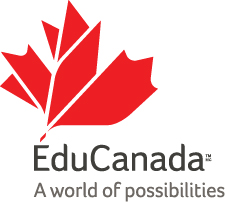High school in Canada

Are you coming to Canada with your teenager or thinking about sending them to Canada for a high school experience abroad? Both offer opportunities for your teenager to grow in a safe and supportive environment while gaining a world-class education.
Also known as secondary school, high school begins in grades 8, 9 or 10 through to grade 12 in most Canadian provinces and territories, except Quebec, which starts in grade 7 and ends in grade 11. After successfully completing high school at age 17 or 18, students can go on to college or university.
High-quality education, high student achievement
Canada has one of the strongest records of student achievement in the world. That’s why we’re an excellent choice for high school education. In fact, sending your child to Canada for secondary school is one of the best ways to prepare them for college or university.
Canadian teens are among the best educated in the world. The Organisation for Economic Co-operation and Development (OECD) reviews and ranks education systems worldwide. In its most recent assessment, Canada ranked ahead of competitors such as the United States, the United Kingdom, Australia and New Zealand on all scales – reading, math and science. Canada also has the 2nd highest rate of high school completion worldwide.
As far as excellence in education, Canada currently ranks 3rd among 15 of our wealthiest peers. The quality of our education system is recognized as one of our greatest strengths (U.S News & World Report, Best Countries for Education, 2023). Much of our success can be attributed to our exceptional teachers. Canadian teachers hold a minimum of a bachelor’s degree and 1 year of practical teacher training. Many go on to earn master’s degrees. Teachers are required to regularly upgrade their skills through ongoing education and professional development.
Standards and quality assurance
Canada’s 10 provinces and 3 territories oversee education, and each of their ministries of education recognizes the importance of maintaining high standards. Through the Council of Ministers of Education Canada, a national organization, they make major policy decisions and design initiatives using their provincial and territorial counterparts as benchmarks (Top Performing Countries (Canada), Center on International Education Benchmarking, 2018). This ensures quality and consistency in the education system.
Attending high school in Canada
Each province and territory decides when the school year starts and ends, although it usually begins in September and ends in June. School hours generally run from 8:30 a.m. to 2:30 p.m., from Monday to Friday. Some students choose to attend summer school to take additional courses or upgrade a course mark.
High school students must attend school until age 16 or 18, depending on the province or territory.
Public high schools
Many Canadian public high schools now accept international students into their programs. Publicly-funded schools are managed at the local level by elected school boards, which deliver a standard curriculum or program of study. Almost all public schools have male and female students in the same classes and offer day programs only.
In most parts of Canada, international students can choose to study in English, French or both. Some provinces offer a separate school system that includes classes in religion. This is part of the public school system and is open to all.
Many parents send their teenagers to Canada for a study abroad experience. You can do this too. Students live with Canadian families, learn about the culture, gain memories to last a lifetime and earn an outstanding education at the same time.
Private high schools offer alternative options
Canada also has independent and private secondary schools. They charge fees for attendance. Private schools must deliver the same curriculum as public schools in the province or territory. This ensures that students complete the same course of study as they would in the public school system.
Class sizes in private schools are often smaller than public schools where students may benefit from specialized programming. Some private schools will have a religious program as well as standard school subjects. Sometimes, private schools are set up for boys only or for girls only.
Private high schools include boarding schools (with on-site accommodations), alternative schools, International Baccalaureate programs and specialized sports programs or schools for students with unique learning needs.
Cost of high school in Canada
Public secondary or high school is free in Canada for Canadian citizens and permanent residents of the country. Schools otherwise charge fees for international students, which can range from approximately CAD 10,000 to CAD 17,000 per year. Please check with the school you want your teenager to attend to confirm the cost, for international students.
Sometimes, schools also charge small fees for your child to participate in extra activities, such as sports teams or school outings. In high school, many students bring their own lunch to school, however, some schools offer cafeterias or hot lunch programs where your child may purchase a meal.
Educational requirements
To enter a high school in Canada, your child may need to show they have:
- Finished certain grades that correspond to grade levels in Canada
- Proficient language skills in English or French
- School results or report cards from their home country
Use this national directory of schools (public and private) to identify a Canadian school and then determine the requirements your school sets for international students.
How to enroll
Contact a local school board if you want to apply for your child to attend a public high school. These boards often assess new students, so the student can begin classes in the correct grade. To enroll your child in a private high school, contact the school directly.
There may be deadlines for applying to public schools or private schools.
Learn more
- Understand the Canadian education system
- Common pathways to college and university in Canada
- Provinces and territories of Canada
- Prepare your budget to study in Canada
- Top reasons to study in Canada
- Studying in Canada: Pre-departure guide
Related
- Date modified: